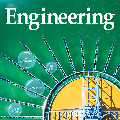
Petri nets have found widespread use among many application domains, not least due to their human-friendly graphical syntax for the composition of interacting distributed and asynchronous processes and services, based in partial-order dependencies and concurrent executions. Petri nets also come with abstract semantics, and mathematical methods for compositional synthesis, structural checks and behavioural analysis. These have led to the use of various kinds of nets for real-time, distributed and parallel programming languages, software and services systems, with a view to their interfaces and interaction protocols. These affordances make Petri nets invaluable for distributed software architecture approaches focused on components, their mutual dependencies and environment-facing interactions. Quantum computing -- and in particular quantum software engineering -- is in its infancy and could benefit from the accumulated insights of software architecture research and of net theory, its methods, and its applications. In this paper, we establish a connection between Petri nets and quantum systems, such that net theory and the component architecture of nets may help in the synthesis and analysis of abstract software models and their interface protocols in hybrid classical-and-quantum programming languages and services systems. We leverage some insights from net formalisms for software specification for a versatile recipe to bake quantum into extant Petri net flavours, and prove universality and compositionality of Petri nets for quantum programming.
翻译:彼得罗网在许多应用领域被广泛使用,特别是由于其基于局部依赖和同时处决的、对以部分顺序依赖和同时处决为基础的分布式和无节制流程和服务构成的对人友好的图形语法,彼得罗网还带有抽象的语义学和数学方法,用于合成合成、结构检查和行为分析,从而导致使用各种网络实时、分布式和平行编程语言、软件和服务系统,以建立界面和互动协议。这些配方使得彼得罗网对于以组成部分、相互依赖性和环境影响为主的分布式软件结构方法具有宝贵的价值。量子计算 -- -- 尤其是量子软件工程 -- -- 处于初级阶段,可以受益于软件结构研究和网络理论、方法及其应用的累积见解。在本文中,我们在彼得罗网和量子系统之间建立了一种联系,因此,网络理论和网络组成部分结构可能有助于合成和分析以混合型、古典和原型编程语言和以环境为主的软件组合的分布式软件结构。我们从软件结构、网络理论学中,将一些多面面面面面面的理论及其接口协议,运用到模型成一个正式的版本的模型。




